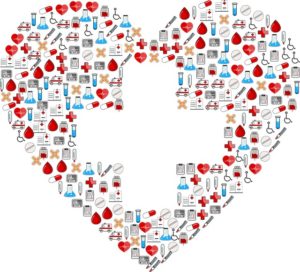
February 28, 2021 marks the 14th annual celebration of International Rare Disease Day, the one day a year when we raise awareness of and honor the more than 300 million people worldwide living with a rare disease. This Rare Disease Day, we also suggest taking time to recognize the many advances in biomedical research that people living with rare diseases have contributed, and the benefits this research has brought to the lives of all people throughout the world living with both rare and common diseases.
When we are able to focus on targets for intervention in smaller enriched populations, there is the expectation of better efficacy and fewer side effects for those being treated
Most rare diseases are single-gene (monogenic) disorders, in which a small change in a person’s DNA, often just one base pair within one gene, is enough to disrupt a fundamental physiologic process. Rare diseases often represent deviations from typical cellular functions that may otherwise go unnoticed or un-studied when working properly and can lead to important biological insights and therapeutics. For example, early observations of rare bleeding disorders, such as hemophilia, opened our understanding of the clotting cascade and other factors that have led to discoveries of drugs and other approaches to both promote and prevent blood clotting, benefiting many areas of medical and surgical care for some of the world’s most common diseases. Research into the “ultra-rare” disease homozygous familial hypercholesterolemia led to the discovery of cholesterol metabolism, resulting in some commonly prescribed medications for the treatment and prevention of cardiovascular disease. Similar discoveries have been seen for rare diseases where muscles don’t contract, nerves don’t communicate, proteins and carbohydrates aren’t broken down, and the retina fails – all illuminated through rare genetic disorders when usual biological “housekeeping” pathways don’t function as they are supposed to.
Rare disease discoveries are also frequently firsts – the first chemotherapies were for the rare blood cancers non-Hodgkin’s lymphoma and childhood acute lymphoblastic leukemia. The first use of a biomarker – a biological signpost – to monitor and treat cancer was for the rare gestational uterine cancer choriocarcinoma. More recently, all of the first gene therapies approved to date have been for rare genetic diseases and rare cancers, and these approaches are now being leveraged for more common diseases, such as Parkinson’s disease. The science of precision medicine is also prototypically a rare disease approach now being adapted to more common conditions. When we are able to focus on targets for intervention in smaller enriched populations, there is the expectation of better efficacy and fewer side effects for those being treated, an approach we want for all our patients.
 When we are asked why we commit research to rare diseases when there are so few people affected with an individual disease (and we are frequently asked this), the answer is very plain – we study rare because, in addition to the much-needed advances for people with rare diseases, they contribute knowledge and understanding disproportionate to the numbers of patients affected.
When we are asked why we commit research to rare diseases when there are so few people affected with an individual disease (and we are frequently asked this), the answer is very plain – we study rare because, in addition to the much-needed advances for people with rare diseases, they contribute knowledge and understanding disproportionate to the numbers of patients affected.
NCATS has long recognized the value of rare and has committed substantial resources toward innovative research programs that include research networks, team science, patient and advocate involvement, and research-investigator support and education to expedite therapeutics development and gain efficiencies in the research process. This is exemplified in many NCATS rare disease initiatives, such as the novel “platform” approach for genetic diseases PaVe-GT, where we are working to develop four gene therapies at the same time, ultimately streamlining rare disease gene therapy development and making it more accessible to patients. The Rare Diseases Clinical Research Network is made up of 20 research consortia that are able to collectively study more than 250 different rare diseases. These research teams partner with patients and advocacy groups to better understand disease biology and progression, and develop innovative therapies. Newer programs examine shared molecular etiologies of disease, such as common genetic mutations, for more than one disease within a single study protocol, and focus on diagnostic approaches that combine machine-learning, genomics, and clinical approaches intended to accelerate the often lengthy, years-long rare disease diagnostic odyssey most patients go through to find an accurate diagnosis.
So this Rare Disease Day, if you know one of the estimated 1 in 10 people living with a rare disease, please honor, recognize and – yes – thank them for all they have done and continue to do, to help us to further understand human physiology and accelerate the development of treatments for the thousands of diseases and conditions, common and rare, for which there are still no good therapeutic options.
Comments